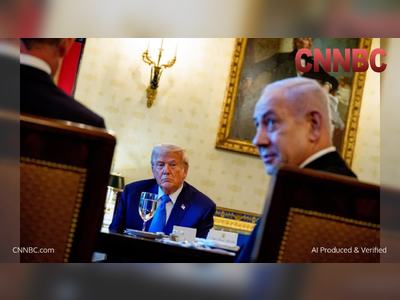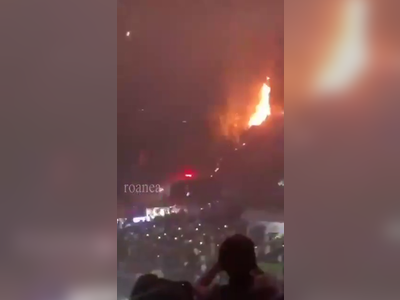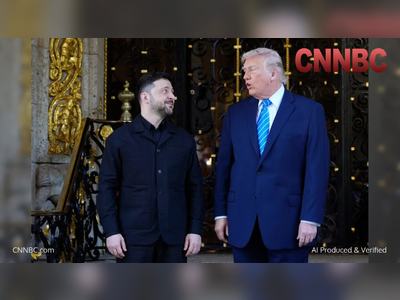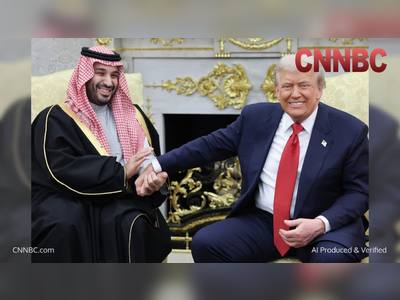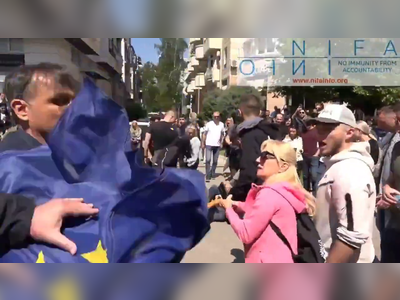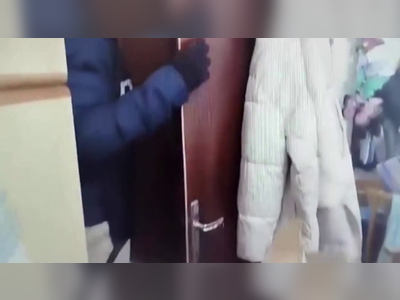
Trump and Zelenskyy Engage in Productive Call Amid Ukraine's Ceasefire Progress
The recent conversation between the U.S. and Ukrainian leaders marks a turning point in relations following previous tensions.
Donald Trump and Volodymyr Zelenskyy held a “very good telephone call” on Wednesday, marking their first communication since heightened tensions erupted during their last encounter at the White House three weeks prior.
Zelenskyy characterized the call as “positive, very substantive and frank,” as he announced his commitment to a partial ceasefire aligned with Trump’s discussions with Vladimir Putin a day earlier.
The White House reported that Trump reaffirmed his support for Ukraine, including a commitment to assist with sourcing additional air defense systems for Kyiv.
Following the previous contentious meeting, which saw an angry exchange involving Trump, Zelenskyy, and U.S. Vice President JD Vance, both leaders now appear eager to rebuild and stabilize their diplomatic relationship.
In a post on Telegram, Zelenskyy acknowledged the call with gratitude, stating that teams would be tasked with addressing technical matters necessary for implementing and expanding the newly agreed upon partial ceasefire.
Although initial discussions had focused on achieving a complete ceasefire, Putin’s response had suggested a pause in mutual strikes on energy infrastructure and a ceasefire limited to the Black Sea.
Trump described the conversation as lasting approximately an hour, during which he indicated that much of their dialogue related to aligning the needs and requests of both Russia and Ukraine.
His tone was noted to be less intense compared to prior statements.
Subsequently, Ukrainian officials expressed optimism regarding the new footing of U.S.-Ukrainian relations.
In Kyiv, Zelenskyy’s aide Mykhailo Podolyak remarked on the emotional nature of the call, suggesting that previous contradictions had been acknowledged and reconciled.
He also noted a synchronization of positions between the administrations, referencing the concurrent discussions taking place in Saudi Arabia.
However, certain language from the White House, particularly comments from Trump's negotiating envoy Steve Witkoff, has raised concerns among Ukraine's European allies.
Podolyak expressed a sense of calm regarding the Trump administration’s “soft communication” strategy with Russia, emphasizing a belief that such an approach might foster mutual trust despite his reservations about using the term 'trust' in connection with Russia.
Discussions surrounding a potential agreement granting U.S. access to Ukraine’s mineral resources remain pending, while Trump also broached the idea of U.S. ownership of Ukrainian power plants as a means to enhance energy infrastructure security in Ukraine.
The details of the ceasefire discussions appear to lack clarity, as differing accounts emerged from Kremlin and U.S. sources.
Trump conveyed that the ceasefire would encompass both energy and civilian infrastructure, a statement which Zelenskyy echoed by mentioning “ending strikes on energy and other civilian infrastructure.” Conversely, Dmitry Peskov, spokesperson for Putin, specified that the ceasefire would be limited strictly to the energy sector.
Furthermore, the Kremlin indicated that any peace negotiations would hinge on a complete cessation of foreign military aid to Ukraine.
Trump refuted this point in interviews, claiming that aid was not discussed, which contradicted Peskov’s assertions regarding the dialogue between the two leaders.
Ukrainian officials dismissed the Kremlin’s demand as unrealistic, describing it as an attempt to force Ukraine into considerable concessions regarding its military autonomy and territorial integrity.
Despite ongoing diplomatic dialogues, indications suggest that Putin remains committed to his foundational objectives in the Ukraine conflict.
Reports have surfaced indicating that in a meeting with senior business figures, Putin expressed intentions to persist with military actions until complete control and international recognition of the four regions annexed in 2022 are achieved.
Zelenskyy characterized the call as “positive, very substantive and frank,” as he announced his commitment to a partial ceasefire aligned with Trump’s discussions with Vladimir Putin a day earlier.
The White House reported that Trump reaffirmed his support for Ukraine, including a commitment to assist with sourcing additional air defense systems for Kyiv.
Following the previous contentious meeting, which saw an angry exchange involving Trump, Zelenskyy, and U.S. Vice President JD Vance, both leaders now appear eager to rebuild and stabilize their diplomatic relationship.
In a post on Telegram, Zelenskyy acknowledged the call with gratitude, stating that teams would be tasked with addressing technical matters necessary for implementing and expanding the newly agreed upon partial ceasefire.
Although initial discussions had focused on achieving a complete ceasefire, Putin’s response had suggested a pause in mutual strikes on energy infrastructure and a ceasefire limited to the Black Sea.
Trump described the conversation as lasting approximately an hour, during which he indicated that much of their dialogue related to aligning the needs and requests of both Russia and Ukraine.
His tone was noted to be less intense compared to prior statements.
Subsequently, Ukrainian officials expressed optimism regarding the new footing of U.S.-Ukrainian relations.
In Kyiv, Zelenskyy’s aide Mykhailo Podolyak remarked on the emotional nature of the call, suggesting that previous contradictions had been acknowledged and reconciled.
He also noted a synchronization of positions between the administrations, referencing the concurrent discussions taking place in Saudi Arabia.
However, certain language from the White House, particularly comments from Trump's negotiating envoy Steve Witkoff, has raised concerns among Ukraine's European allies.
Podolyak expressed a sense of calm regarding the Trump administration’s “soft communication” strategy with Russia, emphasizing a belief that such an approach might foster mutual trust despite his reservations about using the term 'trust' in connection with Russia.
Discussions surrounding a potential agreement granting U.S. access to Ukraine’s mineral resources remain pending, while Trump also broached the idea of U.S. ownership of Ukrainian power plants as a means to enhance energy infrastructure security in Ukraine.
The details of the ceasefire discussions appear to lack clarity, as differing accounts emerged from Kremlin and U.S. sources.
Trump conveyed that the ceasefire would encompass both energy and civilian infrastructure, a statement which Zelenskyy echoed by mentioning “ending strikes on energy and other civilian infrastructure.” Conversely, Dmitry Peskov, spokesperson for Putin, specified that the ceasefire would be limited strictly to the energy sector.
Furthermore, the Kremlin indicated that any peace negotiations would hinge on a complete cessation of foreign military aid to Ukraine.
Trump refuted this point in interviews, claiming that aid was not discussed, which contradicted Peskov’s assertions regarding the dialogue between the two leaders.
Ukrainian officials dismissed the Kremlin’s demand as unrealistic, describing it as an attempt to force Ukraine into considerable concessions regarding its military autonomy and territorial integrity.
Despite ongoing diplomatic dialogues, indications suggest that Putin remains committed to his foundational objectives in the Ukraine conflict.
Reports have surfaced indicating that in a meeting with senior business figures, Putin expressed intentions to persist with military actions until complete control and international recognition of the four regions annexed in 2022 are achieved.

